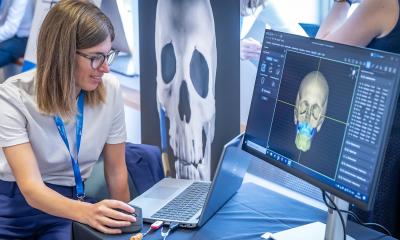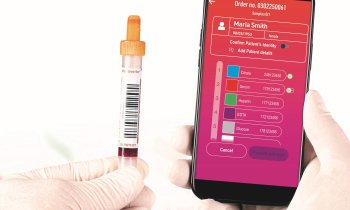Source: Pexels/rawpixel
News • Market report
Digital pathology: when technology and medicine unite
When two powerful products are combined, the outcome often becomes much more effective. One such proof is the digital pathology, where technology coupled with medicine.
The introduction of technology has completely transformed the face of medical diagnosis, providing new hope to many sufferers. It has become essential to identify the cause of diseases to prevent them in the early stages to avoid any severe impacts in the future. The growing number of cancer cases and related deaths around the world is calling the demand for digital pathology.
The inclusion of analytical tools will further enhance the benefits of digital pathology to identify patterns in diseases and in the end strengthen the European healthcare
According to the report published by Research Cosmos, the European Digital Pathology Market is expected to be worth USD 49.9 million in 2018 and foreseen to reach USD 80.64 million by 2021, growing at a CAGR of 10%.
As per the report, Europe is among the steadily increasing regions for the digital pathology market. Although the number of European medical institutions adopting digital pathology are increasing, there is a high need for image analytical tools and artificial intelligence to accelerate the usage in real-time. There is a huge scope for this medical technology apart from viewing on a screen, which has to be explored for better advantages. It is clear that the diagnosis speed can be improved, large amounts of data can be stored and retrieved on demand from anywhere by going digital. However, the inclusion of analytical tools will further enhance the benefits of digital pathology to identify patterns in diseases and in the end strengthen the European healthcare.
Recent achievements in Europe include a national pathology system across Denmark, which has improved quality and healthcare security to patients. This system has helped in covering the entire country using advanced technology to store and assess the specimen of sufferers. The country-level system provided digitalization of laboratory workflow, ordering of pathology services, presenting the specimen, ordering to a physician, and other features reducing time consumption and improving patient safety. The computerization of laboratory processes and linking to pathology, along with the national database unveils several new opportunities for automation of images that include analysis and transfer of whole slide images.
Recommended article

Article • Danish experience
A national digital pathology system
A national digital pathology system across Denmark has helped to significantly improve efficiency and raise levels of patient safety. It has used advanced computer software systems and created a countrywide database to optimise the assessment of patients’ specimens. Report: Mark Nicholls
However, the European digital pathology market is facing some prominent obstacles. One of them is the availability of skilled pathologists, as most of the available experienced people will retire soon and it is essential to convince more young people to continue the baton. The other obstacle would be increasing expenses with the increase in technological adoption. Due to more emphasis on molecular testing, doctors and lab assistants are demanding higher wages in some areas. Finally, the need for integration of treatments and drugs is a significant challenge for the European digital pathology market, where the lack of proper supply of medicines will result in extreme conditions even after effective diagnosis.
To sum up, the European digital pathology market has tremendous potential for the growth of more advanced digital pathology processes and by addressing the aforementioned challenges it can even transform the entire traditional prognosis to a new cost-effective solution. The support from regional government will also play a major role in the future.
Source: Research Cosmos
25.09.2018











